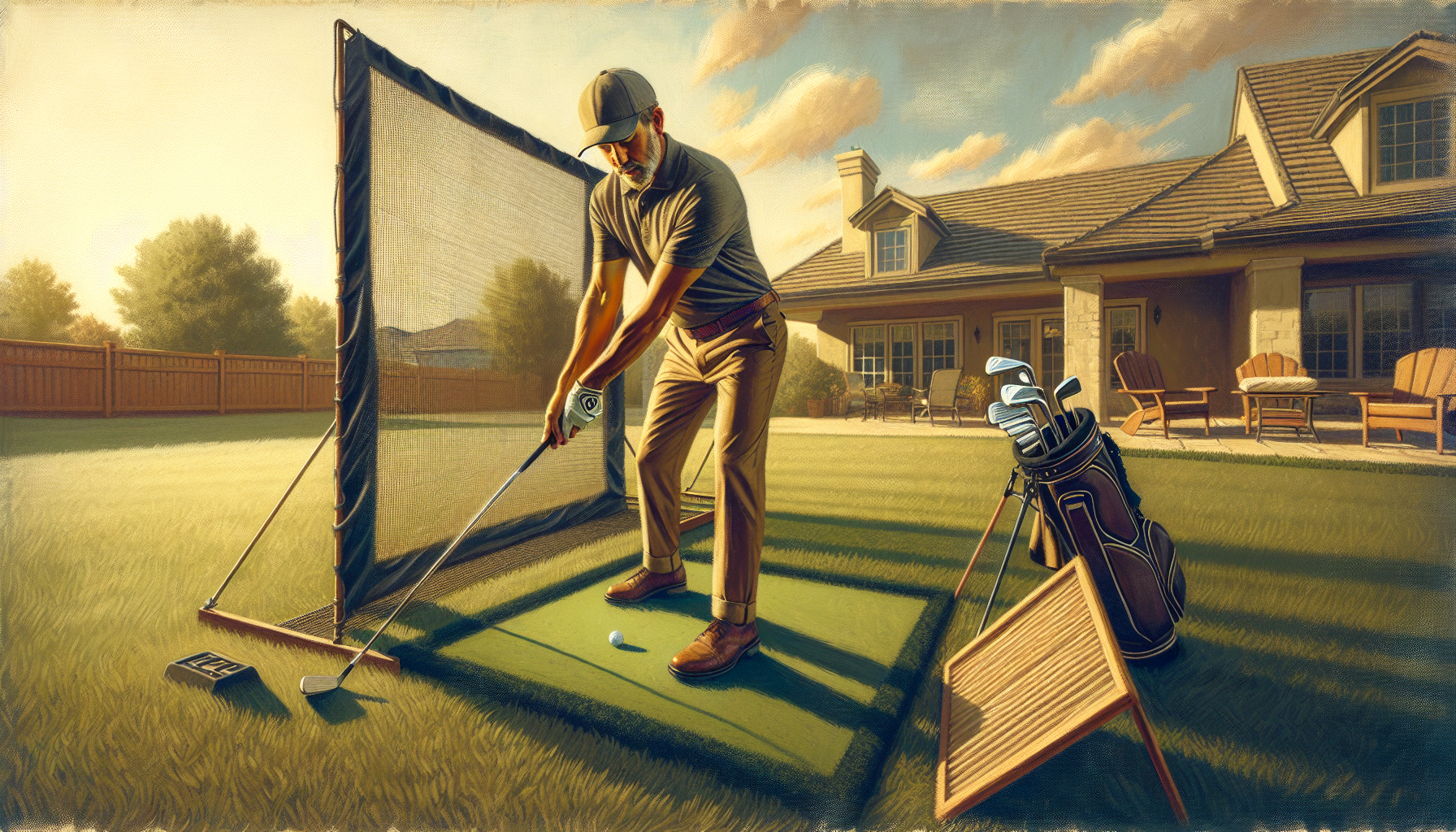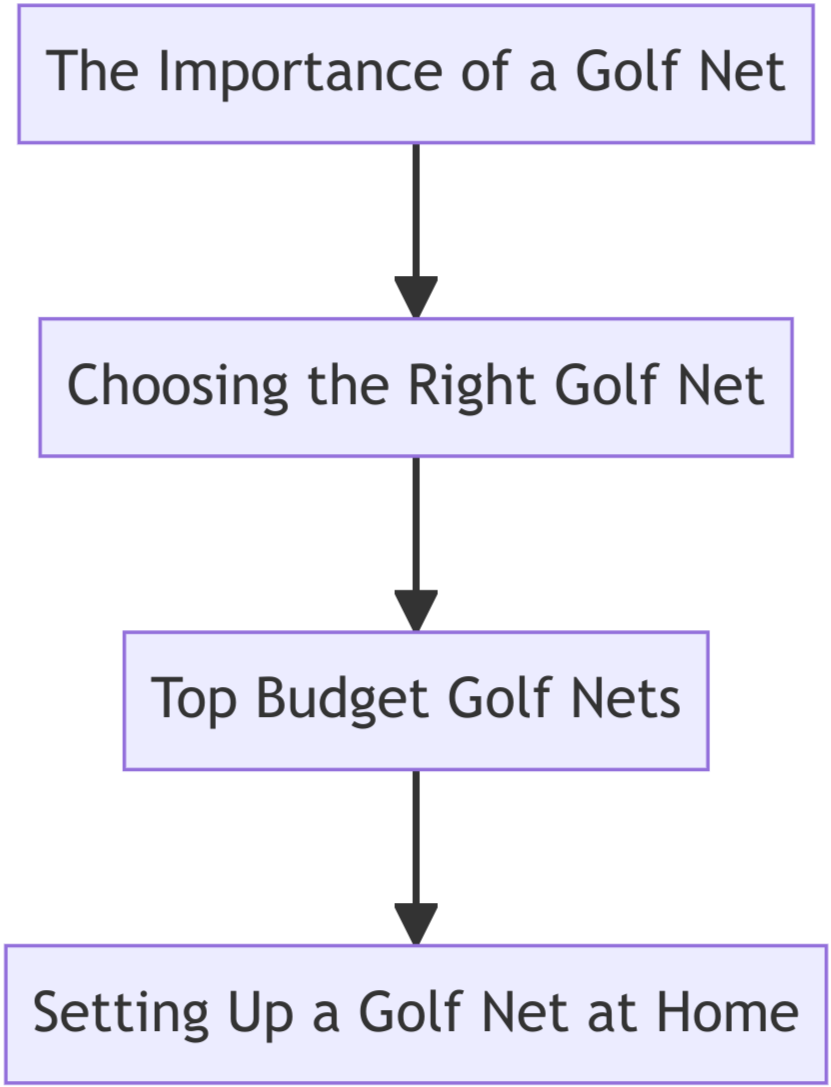13 Swing Plane Mistakes Every Weekend Golfer Makes (And How to Fix)
Picture this: You're standing on the first tee, feeling confident after warming up, and you unleash what feels like the perfect swing. But instead of watching your ball soar down the fairway, you're scrambling to find it in the trees again. Sound familiar?
You're not alone. After coaching thousands of weekend golfers over the years, I've discovered that almost every scoring problem traces back to swing plane issues. The crazy part? Most golfers have no idea what swing plane even means, let alone how to fix it.
Here's the thing that separates weekend warriors from scratch golfers: consistency. And consistency comes from understanding your swing plane - the invisible track your club travels on during your swing. When you master this fundamental, everything else starts falling into place.
Why Swing Plane Matters More Than You Think
Swing plane fundamentals aren't just technical mumbo-jumbo - they're the foundation of every good golf shot. Think of your swing plane as the highway your club travels on. When you stay on the road, you reach your destination (solid contact). When you veer off, you end up in the rough.
The brutal truth? Research from GolfTEC shows that amateur golfers consistently struggle with the same swing plane issues that tour pros have mastered. The difference isn't talent - it's awareness.
But here's more... Most weekend golfers make these mistakes because they've never been taught what proper swing plane looks like. They're swinging blind, hoping for the best instead of building a reliable, repeatable motion.
🎯 Why Swing Plane Destroys Your Game
- ⭐ Off-plane swings create compensations that lead to inconsistent contact
- ⭐ Poor swing plane is the #1 cause of slices, hooks, and weak shots
- ⭐ When your plane is wrong, even good swings produce bad results
The 13 Swing Plane Mistakes That Are Sabotaging Your Scores
Let me walk you through the most common swing plane mistakes I see every weekend at courses across the country. These aren't complex technical faults - they're simple errors that create big problems.
Mistake #1: Starting Too Upright at Address
This is the mistake that sets everything else in motion. I see golfers stand too tall over the ball, creating an address position that makes it impossible to swing on the proper plane.
When you're too upright, your arms hang straight down instead of angling slightly outward. This forces you to lift the club instead of turning around your body. Proper golf swing basics start with the right posture.
The Fix: Bend more from your hips, not your knees. Your chest should be over your toes, with your arms hanging naturally. Think "athlete ready to move" rather than "standing at attention."
Mistake #2: Taking the Club Too Far Inside on Takeaway
Weekend golfers love to "turn away from the ball," but they often overdo it. The club disappears behind their body too quickly, creating a flat, inside takeaway that leads to all sorts of problems.
This mistake happens because golfers think "inside" means "better." But there's a difference between a good inside move and getting trapped behind your body.
The Fix: Start your takeaway by moving the club slightly outside your hands for the first few feet. The club should stay visible in your peripheral vision until it reaches hip height.
Mistake #3: Lifting Instead of Turning
Here's a big one: lifting the club with your arms instead of turning your body. This creates a steep, choppy swing that lacks power and consistency.
I see this constantly with golfers who've been told to "get the club up." They interpret this as lifting, when they should be turning their shoulders and letting the club rise naturally.
The Fix: Focus on turning your left shoulder under your chin (for right-handed golfers). The club will rise naturally as your body turns. Practice with tempo drills to feel the difference.
💡 Quick Plane Check
- ✅ At hip height, your club shaft should point at the target line
- ✅ At the top, your left arm should be on the same plane as your shoulders
- ✅ Halfway down, the shaft should be parallel to your target line
Mistake #4: Losing Your Spine Angle in the Backswing
Maintaining your spine angle is crucial for staying on plane. When golfers stand up or lean toward the target during the backswing, they throw off their entire swing plane.
This often happens when golfers try to "stay behind the ball" but misunderstand what that means. They lean back instead of maintaining their original posture.
The Fix: Keep your head relatively quiet and maintain the spine angle you established at address. Practice your posture until it feels natural.
Mistake #5: Over-Rotating Your Hips Too Early
While hip rotation is important, overdoing it early in the backswing can pull your swing plane too flat. This forces compensations later in the swing.
Many weekend golfers think "turn, turn, turn" but don't understand the sequence. Your shoulders should do most of the work in the early backswing.
The Fix: Start with shoulder turn and let your hips follow naturally. Think 2:1 ratio - for every two degrees of shoulder turn, allow one degree of hip turn.
Mistake #6: Coming Over the Top on the Downswing
This is the classic weekend golfer move. Instead of dropping the club into the slot, they throw it over the top, creating an out-to-in swing path that produces slices and weak shots.
Golf instructors report that this is one of the most common mistakes they see on lesson tees across the country.
The Fix: Start your downswing with your lower body, not your shoulders. Feel like you're dropping your right elbow toward your right hip pocket. Master the sequence to eliminate this fault.
Mistake #7: Swinging Too Steep with Irons
Weekend golfers often swing down too steeply with their irons, thinking they need to "hit down on the ball." While some downward angle of attack is correct, too much creates poor contact and divots that are too deep.
This typically happens when golfers try to help the ball into the air or have been told to "hit down" without understanding what that really means.
The Fix: Think "sweep and slightly down" rather than "chop down." The club should brush the ground after impact, not dig into it. Learn proper iron contact for better ball striking.
Mistake #8: Getting Too Flat with the Driver
On the flip side, many weekend golfers swing too flat with their driver, trying to help the ball up in the air. This creates weak contact and inconsistent results.
The irony is that trying to lift the ball actually makes it go lower and shorter. The driver should swing slightly more upward than irons, but not dramatically flat.
The Fix: Trust your driver's loft to get the ball airborne. Swing slightly up through impact, but maintain good swing plane angles. Improve your driver technique for longer, straighter drives.
⚠️ Plane Killers to Avoid
- ❌ Trying to swing "inside-out" without understanding plane
- ❌ Focusing on club positions instead of body movement
- ❌ Making swing changes without checking your setup first
Mistake #9: Shifting Your Weight Incorrectly
Poor weight shift is often a symptom of swing plane problems. When golfers can't stay on plane, they compensate with their weight shift, creating even more issues.
I see golfers either staying too much on their back foot or sliding too far forward. Both create plane problems that compound throughout the swing.
The Fix: Focus on rotating rather than sliding. Your weight should shift naturally as you turn your body properly. Master weight transfer through proper rotation.
Mistake #10: Forcing an Inside-Out Path
Weekend golfers often hear "swing inside-out" and misinterpret this advice. They force the club too far inside, creating a path that's too extreme and leads to hooks or blocked shots.
The goal isn't to swing dramatically inside-out, but to eliminate the over-the-top move and swing more neutrally.
The Fix: Think "on-plane" rather than "inside-out." Professional instructors recommend focusing on proper body rotation rather than manipulating the club path.
Mistake #11: Ignoring Your Natural Athletic Movement
Every golfer has a natural way of moving athletically. Fighting against your natural patterns to achieve a "perfect" swing plane often backfires.
Some golfers are naturally more upright, others more around their body. The key is finding YOUR optimal plane, not copying someone else's.
The Fix: Work with your natural tendencies rather than against them. Adapt your technique to match your body type and abilities.
Mistake #12: Practicing Without Feedback
You can't fix what you can't see. Most weekend golfers practice their swing plane without any feedback about whether they're actually improving.
They make the same mistakes over and over, grooving bad habits instead of building good ones.
The Fix: Use alignment sticks, mirrors, or video to get feedback about your swing plane. Simple training aids can provide instant feedback about your plane.
Mistake #13: Overthinking Instead of Athletic Motion
Here's the biggest mistake of all: turning golf into a mechanical exercise instead of an athletic motion. When you focus too much on positions and angles, you lose the flow that creates good swing plane naturally.
Golf is a game of feel and athleticism. The best swing planes come from good athletes moving naturally, not robots hitting positions.
The Fix: Practice making athletic swings without thinking about positions. Focus on smooth tempo and natural rotation. Develop an effortless swing that repeats automatically.
The Simple 3-Step System to Fix Your Swing Plane
Want to know something that'll change your game forever? You don't need to fix all 13 mistakes at once. In fact, trying to do so will just confuse you and make things worse.
Instead, focus on these three fundamentals in order:
Step 1: Get Your Setup Right Perfect your posture and alignment first. Master your setup position and half your plane problems disappear instantly.
Step 2: Focus on Your Takeaway The first two feet of your backswing determine everything that follows. Get this right and your swing plane will improve dramatically.
Step 3: Feel the Athletic Turn Stop thinking about positions and start feeling the athletic rotation of your body. Let the club follow your body's natural movement.
🏆 Your Plane Success Formula
- ⭐ Better setup = Better plane automatically
- ⭐ Focus on one thing at a time for faster improvement
- ⭐ Athletic motion beats mechanical positions every time
When Your Swing Plane Clicks (And How You'll Know)
You'll know your swing plane is improving when these things start happening:
- Your contact becomes more consistent, even on less-than-perfect swings
- The ball starts going where you're aimed more often
- You stop fighting slices and hooks on every shot
- Your swing feels easier and more natural
- Your distance increases without swinging harder
Most importantly...
The game starts feeling fun again instead of frustrating.
Remember, even tour pros work on their swing plane constantly. The difference is they understand what to work on and how to practice effectively. Develop a smart practice routine and you'll see improvement faster than you ever thought possible.
The best part? Once you understand swing plane, you'll be able to self-correct on the course. No more wondering why good swings produce bad shots. You'll know exactly what went wrong and how to fix it for the next shot.
Your Weekend Warrior Action Plan
Here's what separates the golfers who improve from those who stay stuck:
This Week: Focus only on your setup position. Perfect this and watch how much easier everything else becomes.
Next Week: Add proper takeaway work. Master the first move and your plane will improve dramatically.
Week 3: Put it together with full swings, focusing on athletic motion rather than positions.
And here's why...
When you understand swing plane, golf stops being a game of hoping and starts being a game of knowing. You'll know why you hit good shots and why you hit bad ones. More importantly, you'll know how to fix problems quickly.
The weekend golfers who master swing plane are the ones who consistently break their personal bests and finally start beating their buddies regularly.
Breaking Through Your Swing Plane Breakthrough
Listen, I've seen thousands of weekend golfers transform their games by understanding swing plane. The secret isn't complicated - it's about focusing on the right things in the right order.
Most golfers make swing plane harder than it needs to be. They get caught up in technical details instead of focusing on athletic fundamentals. But when you approach it correctly, swing plane becomes natural and automatic.
Start with your setup, master your takeaway, and trust your athleticism. Do this consistently and you'll be amazed at how quickly your game improves.
Remember: Golf is as much mental as physical. When you understand your swing plane, your confidence soars because you know what you're doing instead of just hoping.
The golfers who implement these swing plane fixes are the ones who finally start playing the golf they've always dreamed of. They're the ones who walk off the 18th green with a smile instead of frustration.
Your breakthrough is waiting. All you have to do is commit to understanding and improving your swing plane, one step at a time.
Swing Plane Mastery: Your Path to Consistent Golf
Understanding swing plane isn't just about hitting better shots - it's about becoming the golfer you've always wanted to be. When your swing plane is correct, everything else falls into place naturally.
You'll stop making the same mistakes over and over. You'll start hitting shots that make your buddies ask, "Where did THAT come from?" And most importantly, you'll enjoy playing golf instead of fighting it.
The 13 mistakes we've covered are fixable. They're not character flaws or permanent limitations - they're simply habits that can be changed with the right approach.
Start today with your setup position. Get that right, and you're already ahead of 90% of weekend golfers. Better golf is just a few swing plane fixes away.
Common Swing Plane Questions from Weekend Golfers
What is swing plane in golf and why does it matter? Swing plane is the angle and path your golf club travels on during your swing. It matters because it determines contact quality, ball direction, and consistency. When your swing plane is correct, you hit straighter, longer shots with less effort.
What's the most common swing plane mistake weekend golfers make? The most common mistake is starting too upright at address, which forces compensations throughout the swing. This leads to lifting the club instead of turning properly, creating inconsistent contact and poor ball flight.
How can I tell if my swing plane is wrong? Signs of poor swing plane include consistent slices or hooks, thin or fat contact, loss of distance, and shots that don't go where you're aimed. If your good swings feel like lucky accidents, your swing plane likely needs work.
Can I fix my swing plane without professional lessons? Yes, many swing plane issues can be improved by focusing on setup position, takeaway fundamentals, and understanding proper body rotation. Using training aids, mirrors, or video can provide helpful feedback for self-improvement.
How long does it take to improve your swing plane? With focused practice, most golfers see improvement in their swing plane within 2-3 weeks. However, fully grooving the changes and making them automatic typically takes 6-8 weeks of consistent practice.




